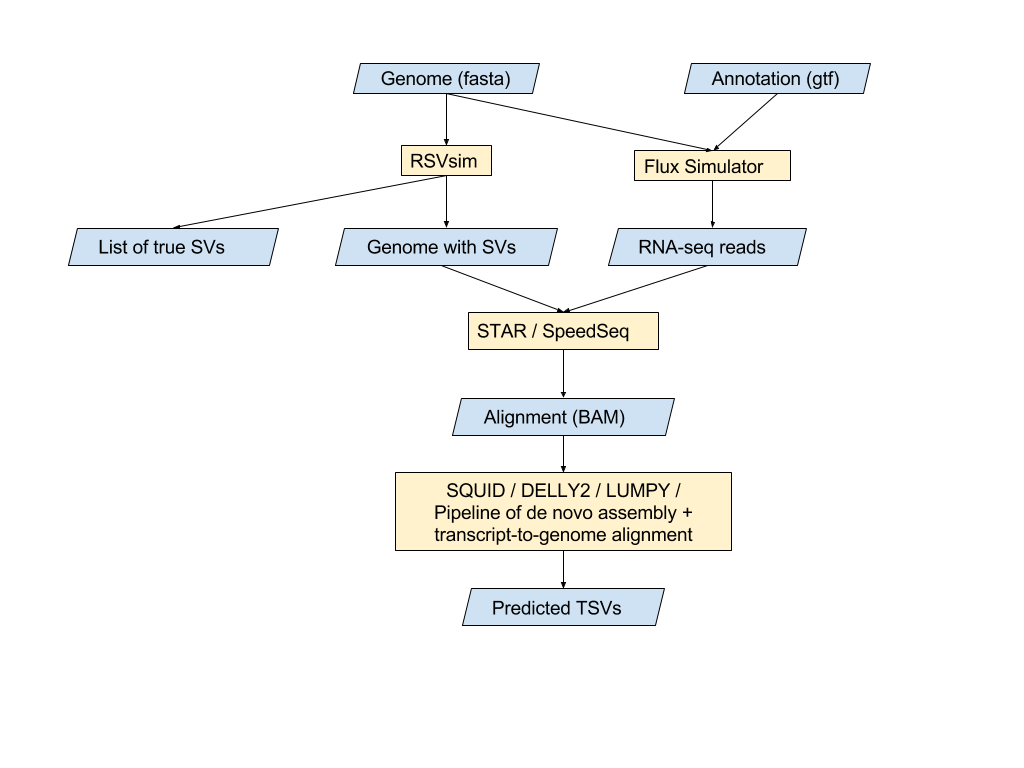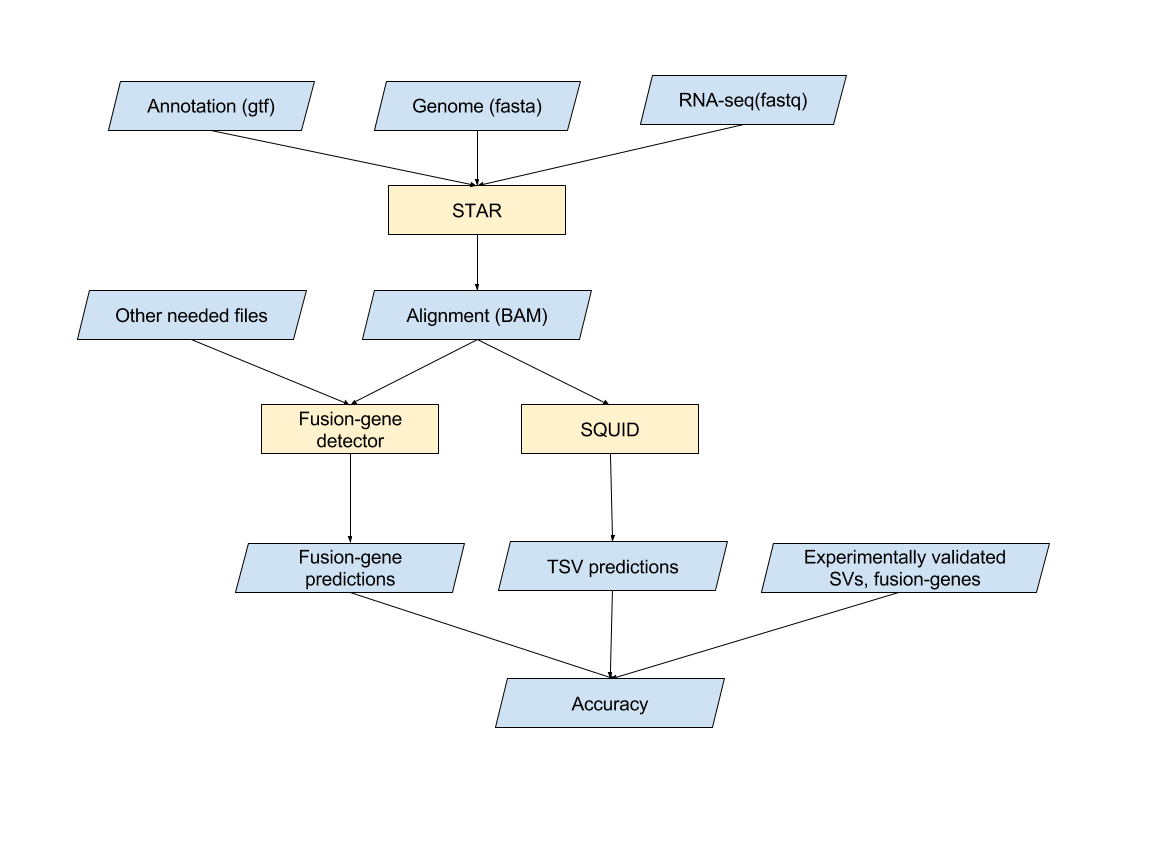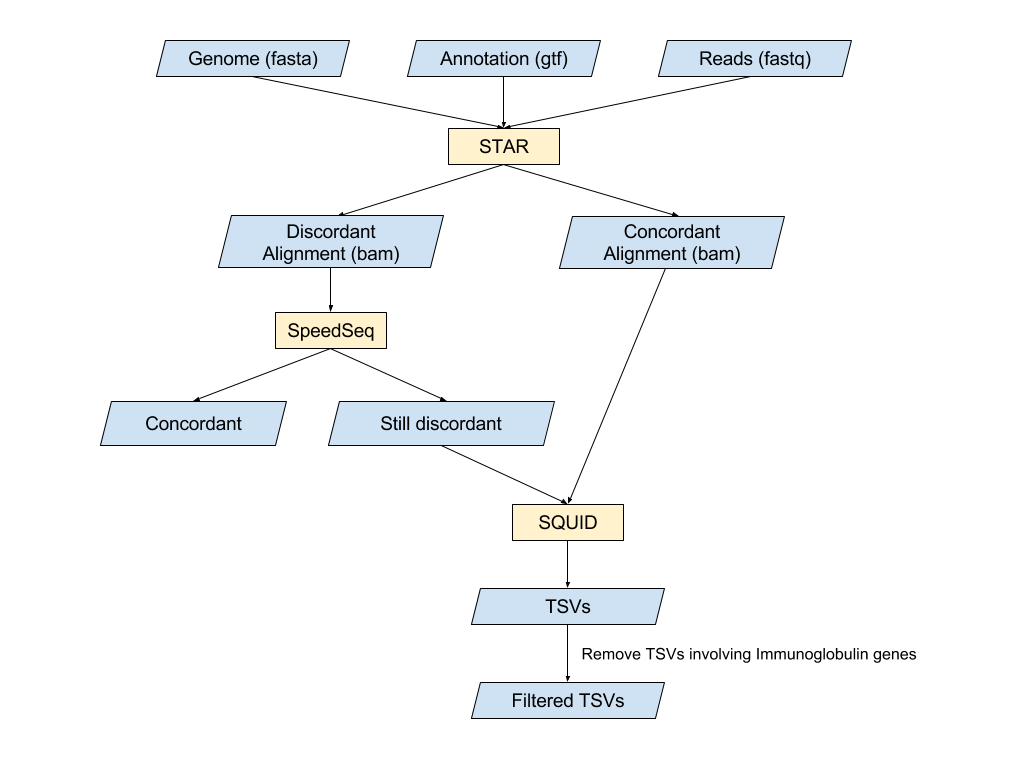This repository keeps the scripts and links to the data used to generate the results in SQUID manuscripts. There are 3 sections of results: on simulation data, on previously studied cell lines, on TCGA data. SQUID software is available at https://github.com/Kingsford-Group/squid.
Required:
Optional (you will need them for simulating RNA-seq reads and SVs):
Make sure that the above software are in your path.
- To skip the simulating step, download the simulated data simulation_data00 and simulation_data01 from here. Decompress them by running the following command in terminal.
cat simulation_data00 simulation_data01 > simulation_data.tar.gz
tar -xzvf simulation_data.tar.gz
To move on with the workflow, we provide a script to do alignment and TSV calling. You can generate all results by running
./scripts/runSimulationData.sh <decompressed data folder> <number of threads>
- If you want to simulate your own data, make sure the optional software are in your path. We write a script to run simulation as in the manuscript. Simply run the following command. (The whole simulation may take more than 1 day to finish, be patient ^ ^)
./scripts/runWholeSimulation.sh
Find the specification of output directory and files here
Here we use Ensembl genome 75 with corresponding annotation file as reference genome for alignment and TSV detection.
For RNA-seq, we use publicly available dataset in SRA database. We merge SRR2532344 and SRR925710 for RNA-seq data of HCC1954 cell line, and use SRR2532336 for HCC1395 cell line.
Running the following command to download genome data and RNA-seq data for you. Make sure fastq-dump (from SRA Toolkit) is in your path.
./scripts/downloadHCC.sh <output directory>
We don't provide scripts for automatic installation of the above tools. Please follow the instruction for each tools for installation and reference preparation. For preparing reference data for each fusion-gene detection tool, we use the following setting in manuscript:
- Chimerascan: We use downloaded Ensembl genome 75 dna sequence. But gtf format is not supported in Chimerascan, so we provide the processed annotation in dataHCC.tgz. After decompression, the annotation file for Chimerascan is named as Homo_sapiens.GRCh37.75_chimerascan.txt.
- deFuse: Specify in their config.txt file that ensembl_version is 75, ensembl_genome_version is GRCg37, and ucsc_genome_version is hg19.
- FusionCatcher: Don't need to anything special. The output comes with predictions in GRCh37 coordinate.
- INTEGRATE: We provide the annotation file in dataHCC.tgz for constructing genome index for INTEGRATE. The file is named as annot.ensembl.txt.
- JAFFA: We download and decompress reference file JAFFA_REFERENCE_FILES_HG19_GENCODE19.tar.gz
Running the following command to reproduce the result:
./scripts/runHCC.sh
We use Ensembl genome 85 and corresponding gene annotation for alignment. To download the genome and prepare STAR index, run the following command:
./scripts/downloadTCGA_genome.sh <number threads> <output directory>
The downloaded reference file will have the following structure in output directory:
- Homo_sapiens.GRCh38.dna_sm.primary_assembly.fa: genome sequence file
- Homo_sapiens.GRCh38.87.gtf: gene annotation file
- StarIndex: folder for STAR index
The barcodes of TCGA samples we used are located in dataTCGA.tgz. After getting RNA-seq fastq files (read1 and read2 in separate files), and make sure STAR and SpeedSeq executable are in your path, running the following command to execute the workflow:
./scripts/TCGAcommand.sh -p <number threads> -r1 <read1 fastq> -r2 <read2 fastq> -i <StarIndex folder> -g <gtf file> -o <output folder>


